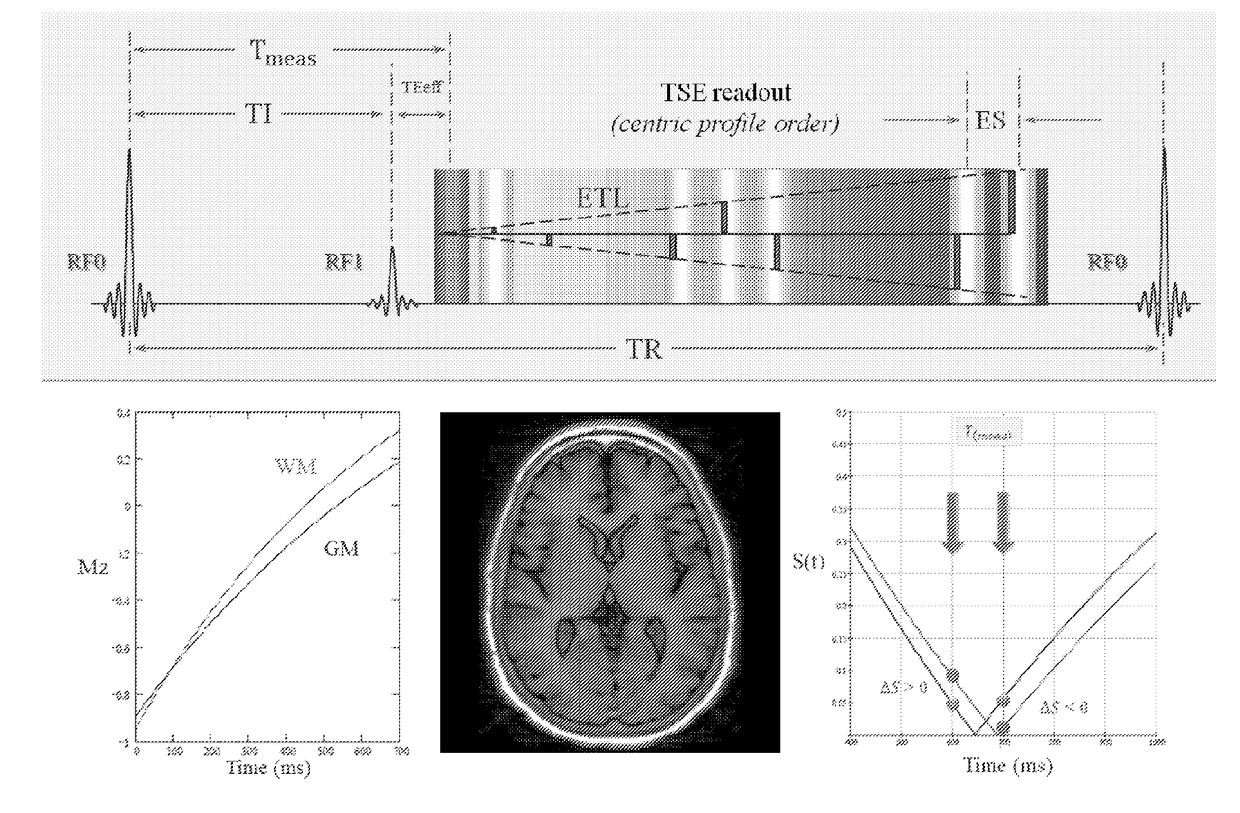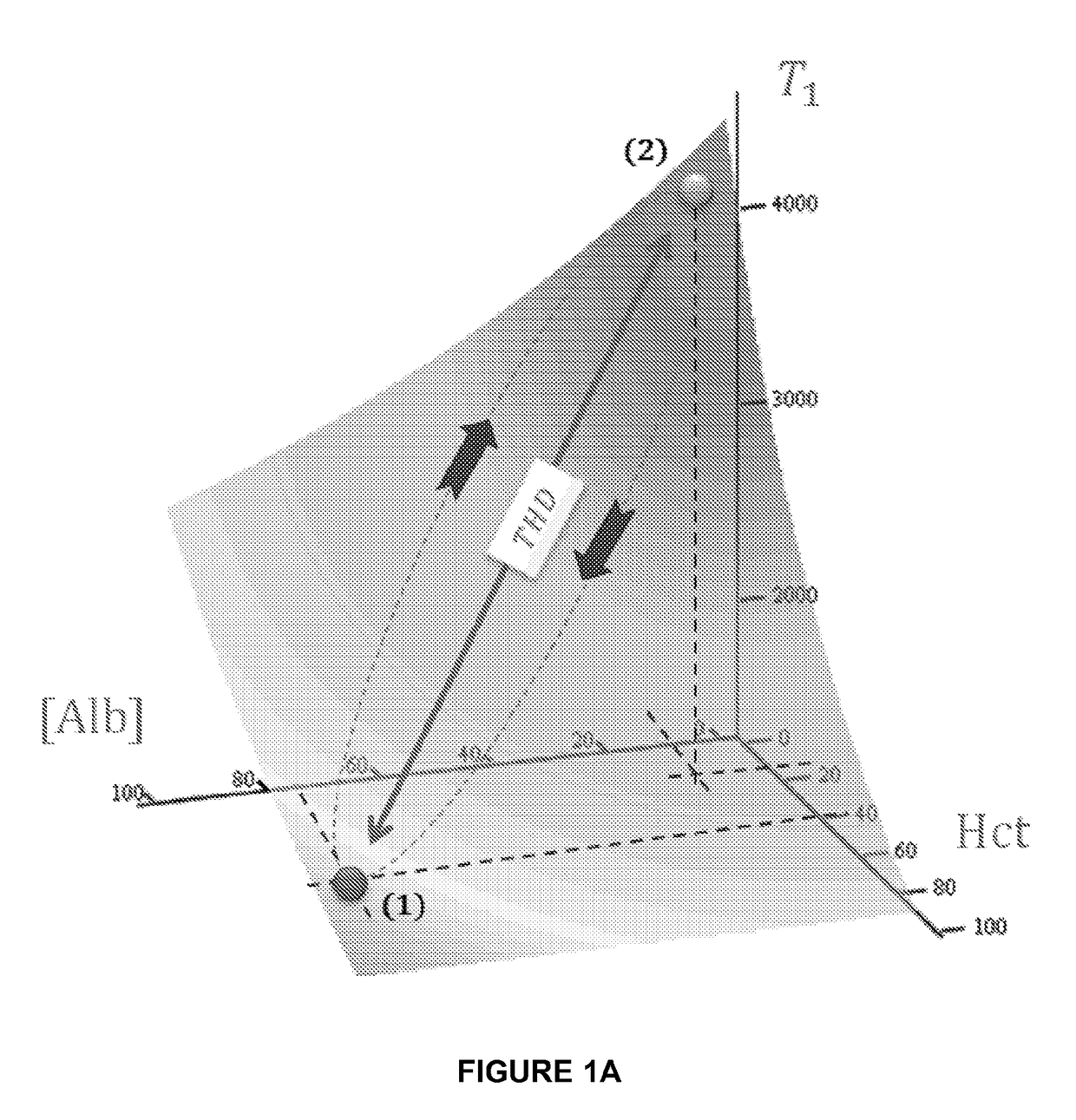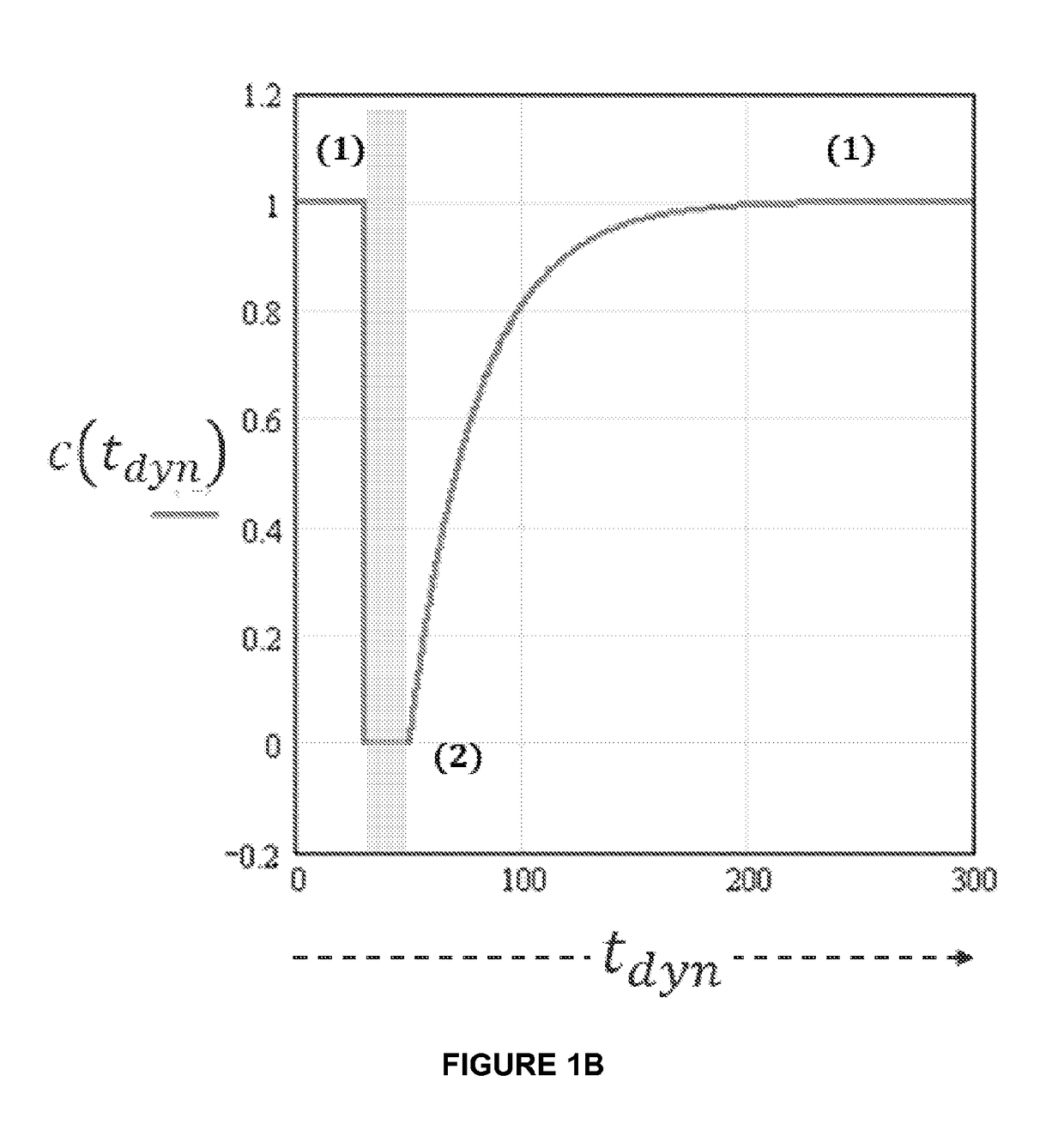Aqueous contrast agents for dynamic MRI and mra
- Summary
- Abstract
- Description
- Claims
- Application Information
AI Technical Summary
Benefits of technology
Problems solved by technology
Method used
Image
Examples
example 1
Phantom Experiments
[0136]The measured qMRI parameters of NS are listed in FIG. 10 along with those of several head tissues and blood (5, 9, 11, 16-20): PD, T1, and T2 of NS are nearly identical to those of pure water and substantially different from the values of blood and brain tissues (21): gray matter (GM) and white matter (WM). The scan of the agarose phantom with the dynlR-TSE pulse sequence showed a very high temporal stability both with the large ROIs in several areas of the phantom as well as at the vial interfaces. Overall, temporal pixel intensity variations of less than 1% over the whole phantom during the five-minute scan were achieved with the dynlR-TSE pulse sequence.
example 2
In Vivo Findings
[0137]The twenty enrolled subjects successfully completed the NS injection and the five-minute dynamic-MRI scan without experiencing any adverse effects or expressing any discomfort associated with the research portion of the MRI exam. This was a multivariable exploratory study geared at detecting a small perfusion related imaging effect in vivo and prospectively: as a result three different pulse sequences were tested and only twelve of the twenty subjects were scanned with the dynlR-TSE pulse sequence at 1.5T, which proved to be the most effective technique for detecting THD perfusion effects. The other eight subjects, which are not discussed further in this paper, were scanned with either an IR prepared T1-weighted pulse sequence based on echo planar imaging (n=3), or with standard T2-weighted TSE sequence (n=4) or at 3T (n=1).
example 3
THD Signal Dynamics
[0138]As shown in FIGS. 5 and 6, which correspond to two different patients, the brain tissue THD signals changed slowly time, extended over long times that far exceeded the injection time, and several (FIG. 7) even persisted past the five-minute observation time allowed in our protocol. With the injection parameters and imaging conditions used herein, the THD signal amplitudes were in the ranges of 10-15% and 2-5% for GM and WM respectively (FIGS. 5 and 6). Much stronger THD signals with amplitudes in the 20-30% range were observed in the nasal mucosa, which is consistent with the known higher vascularity of mucosal tissue relative to brain tissue. Other tissues that showed strong THD signals include the retina, choroid plexus, cranial bone marrow, and muscles. Pulsating arterial blood showed oscillatory signals that are likely modulated by inflow phenomena.
PUM
 Login to View More
Login to View More Abstract
Description
Claims
Application Information
 Login to View More
Login to View More - R&D
- Intellectual Property
- Life Sciences
- Materials
- Tech Scout
- Unparalleled Data Quality
- Higher Quality Content
- 60% Fewer Hallucinations
Browse by: Latest US Patents, China's latest patents, Technical Efficacy Thesaurus, Application Domain, Technology Topic, Popular Technical Reports.
© 2025 PatSnap. All rights reserved.Legal|Privacy policy|Modern Slavery Act Transparency Statement|Sitemap|About US| Contact US: help@patsnap.com



